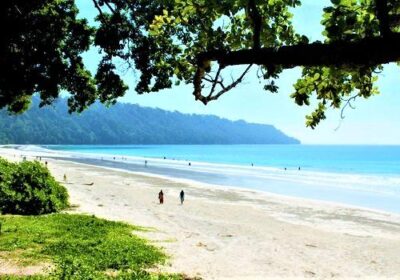The Majestic Damodar River: A Lifeline of Eastern India
The Damodar River, often referred to as the “Sorrow of Bengal” due to its notorious flooding history, is one of the most significant rivers in eastern India. Originating from the Chota Nagpur Plateau in Jharkhand, it flows through the states of West Bengal and Jharkhand before merging with the Hooghly River. With its rich history, economic importance, and ecological significance, the Damodar River is a lifeline for millions of people in the region.
Source: The Damodar River originates near Chandwa village in the Palamu district of Jharkhand.
Course: It flows eastward for about 592 kilometers through the states of Jharkhand and West Bengal before joining the Hooghly River near the town of Uluberia in West Bengal.
Tributaries
Major Tributaries: The Barakar, Konar, Bokaro, and Jamunia rivers are the significant tributaries that feed into the Damodar.
Historical Context
Sorrow of Bengal
Flooding History: Historically, the Damodar River was infamous for its devastating floods, which caused widespread damage and earned it the nickname “Sorrow of Bengal.”
Damodar Valley Corporation (DVC): Established in 1948, the DVC aimed to control the flooding, provide irrigation, and generate hydroelectric power. The construction of dams and barrages has significantly reduced the river’s flooding potential.
Economic Importance
Agriculture
Irrigation: The Damodar River basin is a crucial agricultural area, providing water for the irrigation of crops like rice, maize, and pulses.
Fertile Soil: The river’s alluvial deposits create fertile soil, which is ideal for farming.
Industrial Significance
Coal Mining: The Damodar Valley is rich in coal deposits, making it a major hub for coal mining in India. The region is home to several large coalfields, including Jharia, Raniganj, and Bokaro.
Industrialization: The availability of coal and water resources has spurred industrial development in the region, with numerous steel plants, thermal power stations, and other heavy industries established along the river’s banks.
Ecological Significance
Biodiversity
Flora and Fauna: The Damodar River basin supports a diverse range of flora and fauna, including several endangered species. The river’s wetlands and forests provide critical habitats for wildlife.
Fisheries: The river is an important source of fish, supporting local fisheries and providing livelihood to fishing communities.
Environmental Challenges
Pollution: Industrialization and mining activities have led to significant pollution in the Damodar River. Effluents from factories and coal mines contaminate the water, affecting both human health and the river’s ecosystem.
Conservation Efforts: Various initiatives are being undertaken to clean the river and promote sustainable practices in the region. The DVC and local governments are working to reduce pollution and protect the river’s biodiversity.
Cultural and Religious Importance
Mythological Significance: The Damodar River holds a special place in Hindu mythology. It is believed to be the abode of Lord Shiva, and several ancient temples are located along its banks.
Festivals and Rituals: Local communities celebrate various festivals and perform rituals on the riverbanks, reflecting the cultural significance of the Damodar in their lives.
Tourist Attractions
Scenic Spots
Maithon Dam: Located on the Barakar River, a tributary of the Damodar, the Maithon Dam is a popular tourist destination known for its scenic beauty and boating facilities.
Panchet Dam: Another major dam on the Damodar River, the Panchet Dam offers picturesque views and recreational activities.
Historical Sites
Telkupi: An ancient site submerged by the Panchet Dam, Telkupi is known for its historical and archaeological significance.
Joychandi Pahar: A scenic hill near the river, Joychandi Pahar is a popular spot for trekking and rock climbing, offering panoramic views of the Damodar Valley.
Future Prospects
Sustainable Development
Water Management: Improved water management practices are essential to ensure the sustainable use of the Damodar River’s resources. This includes efficient irrigation techniques, pollution control measures, and flood management systems.
Renewable Energy: Harnessing the river’s potential for renewable energy, such as hydroelectric power and solar energy, can contribute to the region’s sustainable development.
Reflection and Farewell
The Damodar River, with its rich history, economic importance, and ecological significance, remains a vital lifeline for eastern India. From supporting agriculture and industry to providing cultural and religious sustenance, the river continues to shape the lives of millions of people. As efforts to protect and sustainably manage the Damodar River continue, it stands as a symbol of both the challenges and opportunities faced by the region.






Leave feedback about this